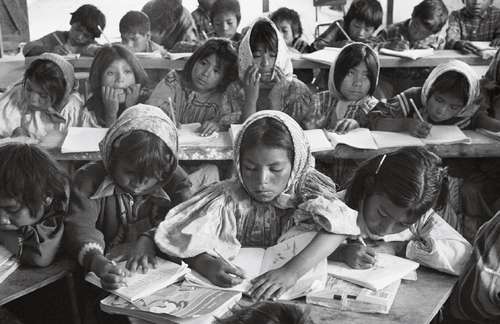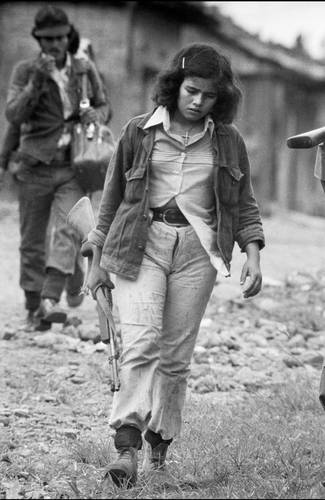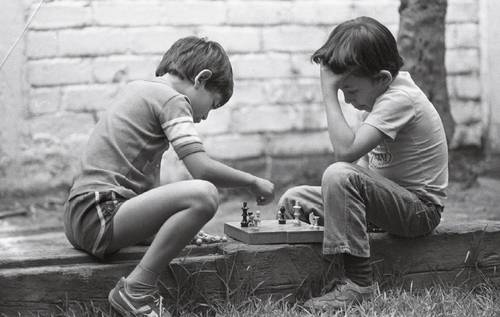The photographer transcends if his images leave the newspaper and circulate: Valtierra

The photographer transcends if his images leave the newspaper and circulate: Valtierra
The photojournalist presented Without Fear of the Light, his most recent book, at the Centro de la Imagen // He also exhibited Return to the Land of the Quetzal
Merry MacMasters
La Jornada Newspaper, Saturday, June 28, 2025, p. 2
Photojournalist Pedro Valtierra learned the secrets of photography and the laboratory from several teachers, but most especially from Manuel Madrigal, who practiced the profession in the early 1970s in the communications office of the Presidency of the Republic, in the then official residence of Los Pinos. One day, Madrigal told him: "Pedro, you'll be a photographer when you lose your fear of light
."
Without Fear of Light is the title of the most recent photography book by Valtierra (Fresnillo, Zacatecas, 1955) published by the magazine Cuartoscuro and presented in the context of Return to the Land of the Quetzal, an exhibition at the Centro de la Imagen (CI) with which the street reporter
celebrates half a century of being a professional photographer and 53 years of taking photos
.
The book comprises a selection of 160 images from the nearly 200,000
Valtierra has captured over half a century, with an emphasis on the 1970s and 1990s. They are accompanied by captions in the form of literary, journalistic, and even poetic texts by author Ricardo Yáñez. It also includes the essays "El Pedro de los primeros años" (Pedro in the Early Years) by journalist Pedro Mellado Rodríguez, and "Valtierra" by writer Élmer Mendoza.
The volume begins with his “first trip to Nicaragua, in April 1979, with reporter Guillermo Mora Tavares; then, in June, with Jaime Arturo Avilés and Carmen Lira (director of La Jornada). I met Susan Meiselas, Bernie Diederich, Alan Riding, Eloy Aguilar, and Óscar Sabeta, among other reporters from many parts.” He adds: “War isn't like the movies; you really die there, and on several occasions we were on the verge of going 'to the other side,' as they say on the street.”
Taking photographs makes me happy, whether on the street or in the countryside or anywhere, but doing reports even happier
, he says.
At the book presentation, held at the CI, the photojournalist stated: "I've tried to be committed to my craft and respectful of all the people I've photographed, my subjects. I've always liked to be involved in strong social issues. I'm committed to journalism and photography, but also to the political aspect. For me, photography has to do, first, with information and, second, with politics. I'm not a politician; however, the photographer has to think about politics because that way they'll have the opportunity to take better images. I learned that from a very young age, working in the Presidency, where I was a shoe shiner, then a janitor, and then a photographer
."

▲ Women on the Road, Chiapas, 1980. A group of Tsotsil women during their daily activities in the community. Image included in the book "Without Fear of the Light," by Pedro Valtierra. Photo: Pedro Valtierra
The photojournalist acknowledged that he would have liked to steal the souls, as they say
, of the people he portrayed. However, I respect the struggles of the guerrillas, of those who do social work, of everything I've photographed. I'm grateful for being given this opportunity. I'm not saying I'm a good photographer, but I've always tried to be respectful of that work, of the people who taught me
.
In the book's introductory text, Valtierra warns: In photojournalism, you get good and bad photos; not everything always turns out well. The advantage of diary writing is that you have three or four work orders each day, always rushing from one to the next, pressed for time
.
Valtierra has worked for media outlets such as El Sol de México and Unomásuno, in addition to founding La Jornada and directing the magazine Mira. In 1986, he created the Cuartoscuro Photography Agency and, in 1993, the magazine of the same name. He has always said that photography's function doesn't end on the page where it's published. It must continue to circulate: "The images that are in the exhibition Return to the Land of the Quetzal —some are included in the book—of both refugees and guerrillas, I took in 1982 with reporter Víctor Avilés. They are photos that were taken for the newspaper. Since then, I've thought they should continue their dynamic."
“In those years, I was indeed questioned because they told me that journalism isn't art. The classifications that were made about photography in the 1980s are another topic that needs to be debated and discussed. I replied: 'I'm a journalist, a street photographer, and a reporter who thinks these photos should be exhibited.' Ultimately, you exist, you're worthwhile, or you're important if your photographs circulate.” In 1998, he received the King of Spain Award for best international news photography.
Since 1975, Valtierra has held nearly 400 solo and group exhibitions in Mexico and other countries such as Russia, Argentina, England, Canada, the United States, Cuba, Spain, France, Italy, Germany, Belgium, Venezuela, Ecuador, Guatemala, and Costa Rica.
"Return to the Land of the Quetzal," organized in collaboration with Cuartoscuro magazine and the Pedro Valtierra Foundation, will remain open until July 13 at the Centro de la Imagen (Plaza de la Ciudadela 2, Centro).

▲ Rarámuri children at a community center during their classes. Guachochi, Chihuahua, 1994. Photo by Pedro Valtierra

▲ A guerrilla woman walks through the city of Estelí, already taken by Sandinista forces. Nicaragua, 1979. Photo by Pedro Valtierra

▲ At El Pesebre, in southern Mexico City, a pair of children play chess (1984). Photo by Pedro Valtierra
La Jornada Newspaper, Saturday, June 28, 2025, p. 3
jornada




